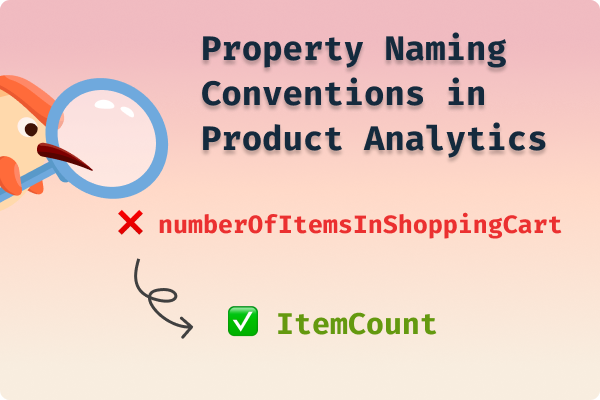In the world of digital products and websites, every small interaction counts. Whether a user clicks on a button, a link, or an image, these seemingly minor actions can reveal powerful insights about their behavior, preferences, and goals. Tracking these clicks isn’t just about collecting data—it’s about understanding your users and making data-driven decisions that improve user experience and drive conversions.
In this blog, we’ll explore how tracking user clicks can help you uncover valuable insights, optimize your website, and boost overall engagement.
What Does “Tracking User Clicks” Mean?
Click tracking involves monitoring and recording the clicks that users make on a webpage. This can include clicks on buttons, navigation links, images, or any other clickable elements. Using tools like Google Analytics, Hotjar, and Crazy Egg, you can track user interactions, identify which elements of your website are getting the most attention, and see where improvements are needed.
Why Small Interactions Matter
Each click is a data point that reflects a user’s interest or intent. Even small actions, like clicking on a CTA, can reveal patterns that help you make informed decisions. These micro-interactions can show what users find valuable, which areas are confusing, or what parts of your site are causing frustration. Tracking these actions over time can provide significant insights into user engagement.
For example, if users are frequently clicking on a button to access a new feature, that indicates interest. But if they’re repeatedly clicking a non-functional element, that may signal confusion or frustration, suggesting a need for clearer design.
Key Insights You Can Gather from Click Tracking
1. User Engagement with Content:
By monitoring clicks on articles, product links, or buttons, you can see which content resonates with users and keeps them engaged.
2. Optimizing Call-to-Actions (CTAs):
Click tracking can reveal how effective your CTAs are. If few users are clicking on them, it might be time to test new designs or placements.
3. Identifying User Friction Points:
Click patterns can also highlight points of friction. For example, if users are repeatedly clicking on a non-clickable element, it may indicate they are unsure of how to navigate the page.
4. Understanding User Intent:
Click data helps you understand what users are trying to achieve, guiding you in optimizing their experience by focusing on the most-clicked elements.
How to Effectively Track and Analyze Click Data
1. Set Clear Objectives:
Before you start tracking clicks, it’s important to define what insights you want to gain. Are you trying to increase conversions, improve user flow, or understand content engagement? Clear objectives will guide your analysis.
2. Use the Right Tools:
Tools like Hotjar and Crazy Egg offer heatmaps and session recordings that show exactly where users are clicking. Google Analytics provides a more detailed, metric-based view of click behavior.
3. Focus on Key Pages:
It’s more effective to track click behavior on high-traffic pages, such as landing pages, product pages, or sign-up forms, where user actions directly impact business goals.
4. Track Both Desktop and Mobile Behavior:
Mobile users often behave differently from desktop users. Tracking clicks across both platforms ensures you don’t miss key differences in user behavior and preferences.
Turning Click Data into Actionable Insights
1. Optimizing User Flow:
Click data can help you refine the user journey by identifying unnecessary steps or highlighting where users are getting lost. Simplifying the flow can lead to better engagement and higher conversions.
2. Refining UX Design:
Tracking clicks allows you to optimize the placement of buttons and links. For example, if users aren’t clicking a CTA that’s placed below the fold, consider moving it higher on the page.
3. Increasing Conversion Rates:
Small changes, such as tweaking CTA text or button colors, can significantly boost conversion rates. Click data gives you the insights you need to test and optimize these elements.
Case Study: How Tracking Clicks Led to Major UX Improvements
An e-commerce company faced declining conversions despite high traffic. They used click tracking tools like Hotjar and Google Analytics to analyze user interactions, focusing on the product and checkout pages.
Findings
- Low Add-to-Cart Clicks: The “Add-to-Cart” button was placed too low on the page, leading to low engagement.
- Confusing Navigation: Users frequently clicked on secondary links, distracting them from primary CTAs.
- Ineffective CTA Placement: The CTA was not visible where users were most engaged.
Optimizations
- Moved CTA Higher: The “Add-to-Cart” button was repositioned near product images and made more prominent.
- Simplified Navigation: Reduced distractions by prioritizing conversion-related actions in the navigation menu.
- A/B Tested CTA Copy: Experimented with more urgent CTA phrases like “Buy Now.”
Results
- 45% increase in Add-to-Cart clicks.
- 20% improvement in conversion rate.
- Lower bounce rate due to simplified navigation.
Best Practices for Click Tracking
1. Don’t Overload with Data:
Focus on tracking the most meaningful clicks, such as those on CTAs, forms, or navigation links, to avoid getting overwhelmed.
2. Review Regularly:
Set up a regular schedule to review click data and make incremental adjustments to keep improving the user experience.
3. Combine with Other Metrics:
Click tracking works best when combined with other metrics like bounce rate, session duration, or conversion rates to get a complete picture of user behavior.
Conclusion
Tracking user clicks provides a wealth of insights into how users engage with your website. By monitoring these small interactions, you can make meaningful improvements to your site’s design, optimize user flow, and drive conversions. Start tracking clicks today and unlock the potential for big insights from even the smallest actions.


.svg)















.png)




.svg)
